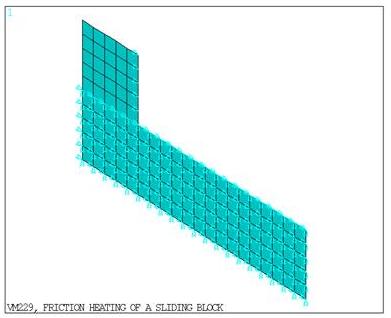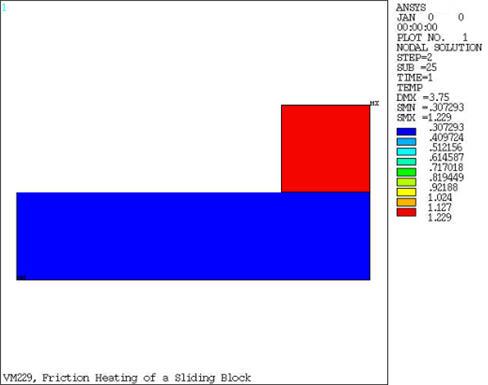VM229
VM229
Friction Heating of Sliding Block
Overview
Test Case
Consider a block sliding over another fixed block. Calculate the temperature changes caused by friction between the blocks.
Analysis Assumptions and Modeling Notes
In this test the two blocks are modeled using PLANE13 elements with CONTA172 elements placed on the bottom surface of the sliding block, and TARGE169 elements placed at the top surface of the fixed block. In the first load step, the sliding block moves 3.75 mm on the surface of the fixed block with an applied pressure of 10 N/mm2. The displacement of the sliding block occurs within a time period of 3.75 ms. Heat is generated by friction and is absorbed by the two blocks. To obtain the steady-state solution, a second load step with 100 time steps was performed with no loading at a duration of 1s. The calculated steady-state results were taken from the end of the final load step.
The same analysis is repeated using Lagrange Multipliers method (KEYOPT(2) = 3 -- Lagrange multiplier on contact normal and penalty on tangent) of CONTA172 elements.




